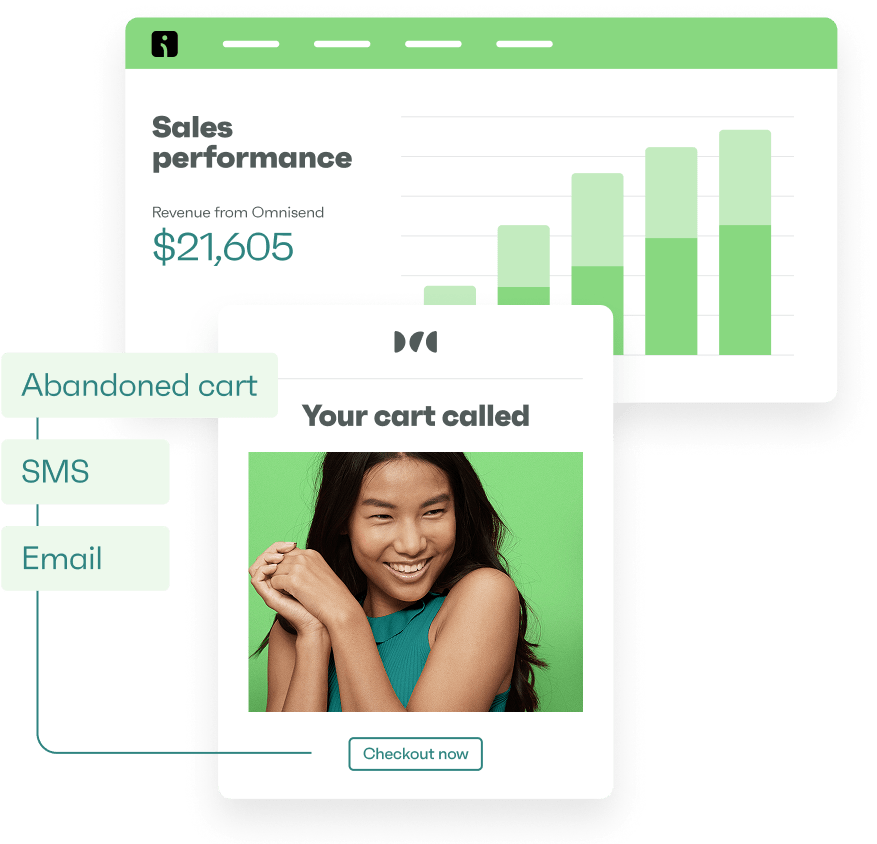Drive sales on autopilot with ecommerce-focused features
See FeaturesStop me if you’ve heard this one before, but branded dropshipping can help you stand out from multiple generic online stores in the industry.
Most dropshipping businesses look the same with stock photos, plain descriptions, and little to no unique value. As a result, they often compete only on price, which makes it hard to build lasting success.
With branded dropshipping, you create an identity that customers can recognize and trust. Instead of being just another store, you offer a shopping experience that feels polished and professional, even if the products come from third-party suppliers.
In this guide, you’ll see how companies like Gymshark and Fashion Nova grew from simple dropshipping setups into global brands.
You’ll also learn the main differences between branded and traditional dropshipping, along with real-world examples and a step-by-step plan to build your own store.
What is branded dropshipping?
Branded dropshipping is when you sell products from branded dropshipping suppliers but package and present them under your own brand. To the customer, it feels like the product comes straight from you.
However, it’s more than just printing a logo on a box. Branded dropshipping involves building a full brand personality that speaks to your audience. This can include:
- Custom packaging
- Prompt customer service
- Curated product selection
- Targeted marketing
Today’s shoppers and consumers want to connect with brands that feel authentic. That trust makes a big difference.
When customers believe in your brand, they buy more often, spend more per order, and stick around longer. Because of this, branded dropshipping stores can charge higher prices and still win loyal customers.
In short, this model shifts dropshipping from being a race to the lowest price into a long-term, profitable business that grows sustainably.
Branded dropshipping vs. traditional dropshipping
The traditional dropshipping business idea centers around quick sales. You pick products from suppliers, list them online, and try to drive traffic with ads. Since most stores look alike, competition usually comes down to price, and the overall shopping experience feels generic.
Branded dropshipping works differently. Instead of chasing quick wins, the focus is on building a brand people connect with. You create a clear identity, choose products that reflect your values, and deliver a consistent experience at every touchpoint.
The results are very different as well. Traditional stores run on thin profit margins because shoppers can easily switch to a cheaper option. Branded stores, on the other hand, can charge more because customers see extra value in the brand and experience.
Marketing is another key difference. Generic stores rely heavily on paid ads and struggle with organic growth. Branded stores benefit from word-of-mouth, social engagement, and loyal customers who serve as advocates for your brand.
Loyalty is where the gap becomes most obvious. With traditional dropshipping, shoppers leave as soon as they find a lower price. With branded dropshipping, customers stick around because they feel connected to your brand.
Here’s a quick side-by-side comparison:
| Aspect | Traditional dropshipping | Branded dropshipping |
| Primary focus | Quick sales and volume | Long-term customer relationships |
| Competition | Price-based competition | Value and experience-based |
| Customer loyalty | Low, price-sensitive | High, brand-attached |
| Marketing costs | High reliance on paid ads | Lower costs through organic growth |
| Differentiation | Generic, interchangeable | Unique brand identity |
| Growth potential | Limited scalability | Strong long-term growth |
4 examples of successful branded dropshipping stores
These brands prove that dropshipping branded products can create million-dollar businesses when executed with strong brand identity and customer focus.
1. Notebook Therapy
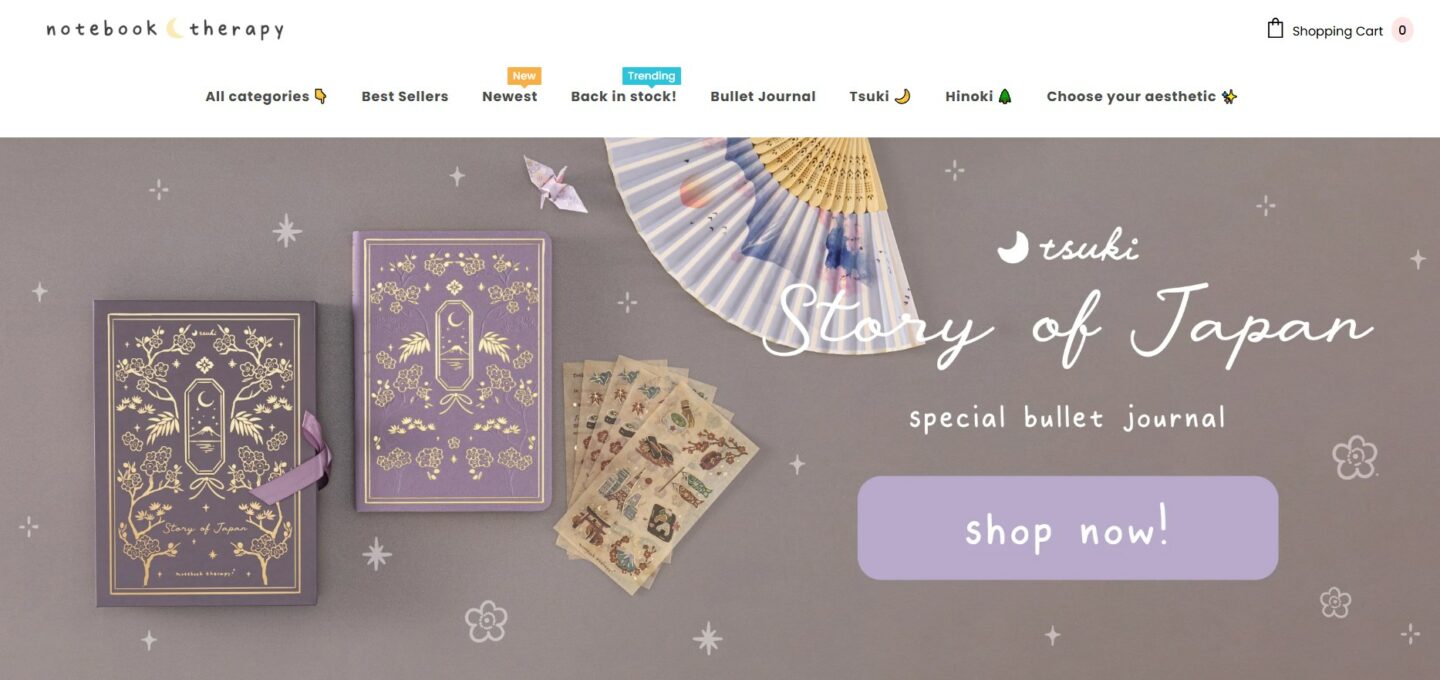
Notebook Therapy built its brand around East Asian-inspired stationery that connects deeply with its audience. It recognizes that customers care about aesthetics in every detail, including their stationery, not just the notebooks themselves.
The brand emphasizes quality using 160GSM paper that prevents ink from bleeding, which is a key feature for bullet journal fans. Its Tsuki collection, with pastel tones, moon-themed designs, and hand-crafted linen covers, gives buyers a sense of premium value.
Meanwhile, much of its growth comes from social media. Its aesthetic content has gone viral on TikTok and Instagram, reaching millions of potential customers. With 1.6 million Instagram followers, Notebook Therapy has created a community that shares in the lifestyle its products represent.
2. Meowingtons
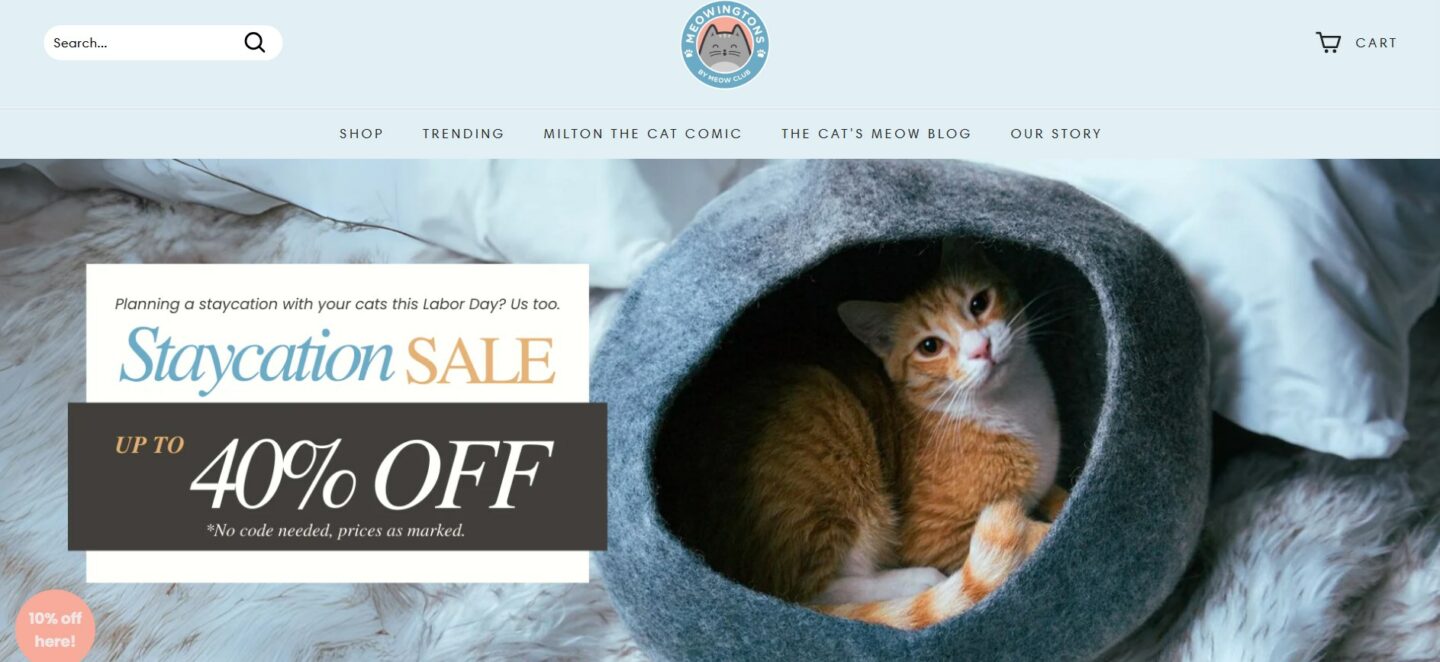
Meowingtons is a testament to how niching down can build loyal customers for your dropshipping brand. By serving just cat lovers, it created a brand that feels very personal and community-driven.
Its catalog extends beyond pet supplies to apparel, decor, and lifestyle items, but they’re all tied to its feline theme.
A standout feature of Meowingtons is its commitment to shelter cats. A portion of each sale goes toward cat adoption fees, foster programs, and shelter partnerships. This mission strengthens the emotional bond between the brand and its cat-loving customers.
Notably, the brand’s growth and even trademark disputes with public figures highlight how valuable and recognizable it has become.
3. Fashion Nova
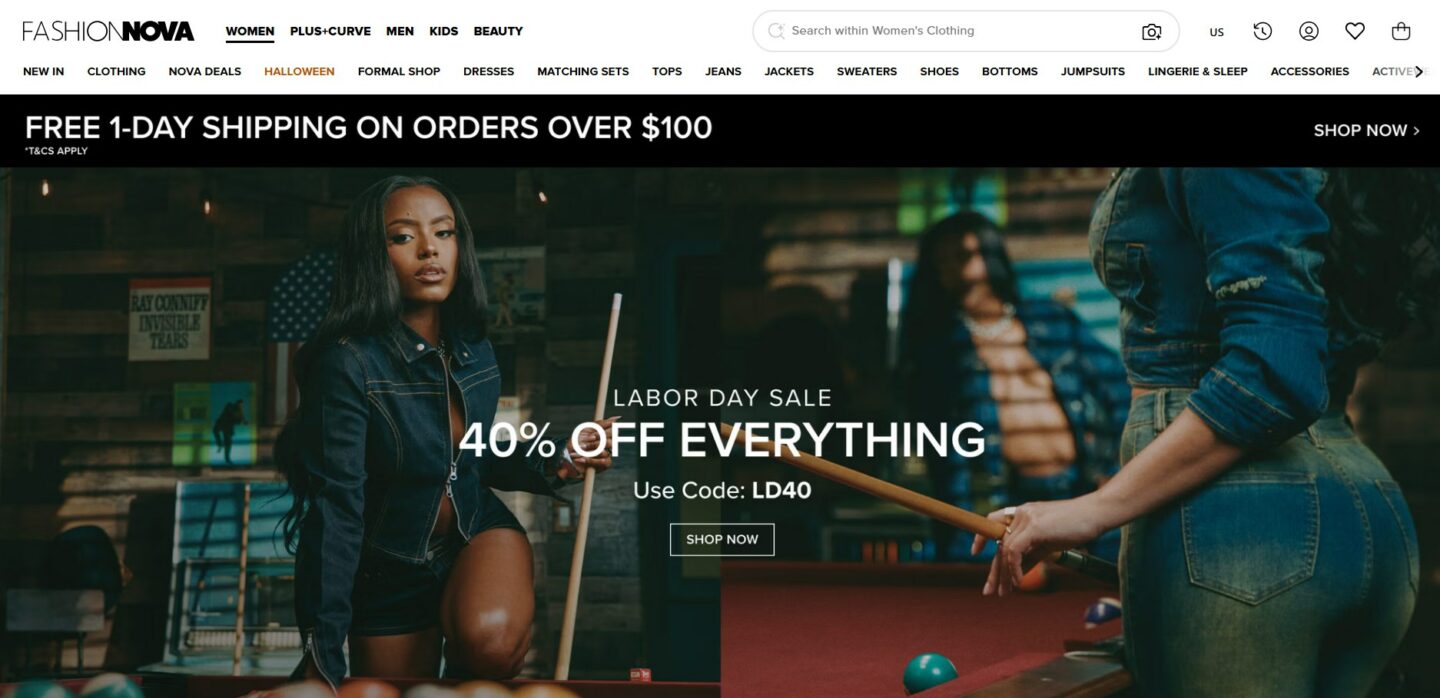
Fashion Nova is proof that branded dropshipping can scale globally. It began as a small boutique in Los Angeles but grew rapidly by tapping into its audience’s need for trendy, affordable fashion.
The brand’s ultra-fast model releases 500+ new styles each week, staying ahead of trends and responding quickly to viral fashion moments. This speed gives it an edge over traditional retailers.
Fashion Nova also thrives on social media. With over 22 million Instagram followers and celebrity partnerships with Cardi B, Kylie Jenner, and Megan Thee Stallion, the brand has built massive reach and credibility.
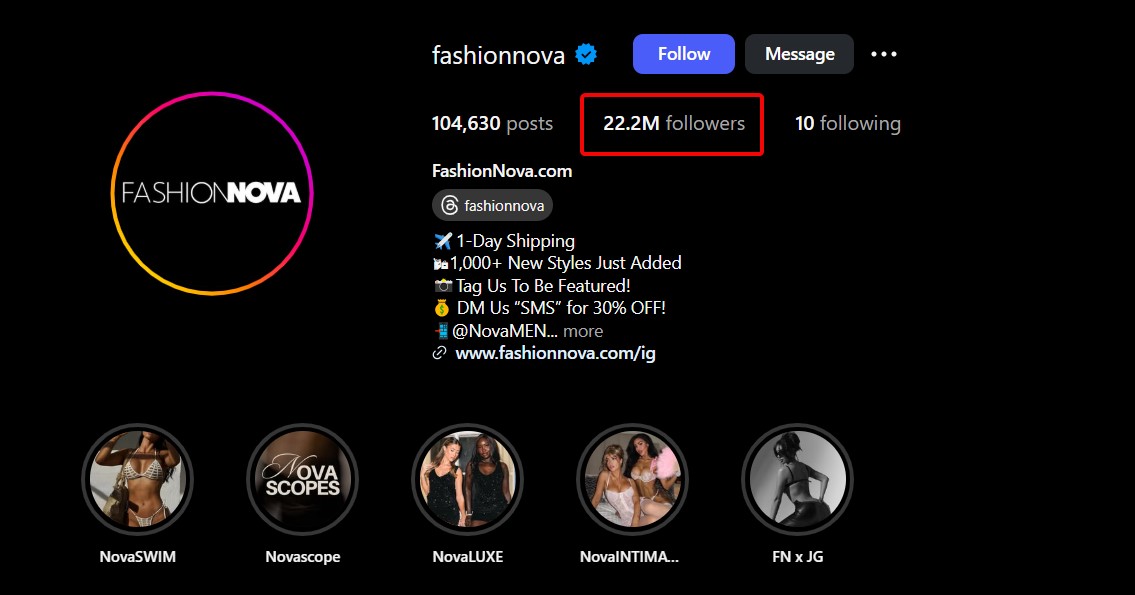
These collaborations provide credibility and reach that traditional advertising just cannot match. Importantly, user-generated content and influencer partnerships form the backbone of its dropshipping marketing strategy.
The result was nearly $871 million in revenue in 2024, with 5–10% projected growth in 2025.
4. Gymshark
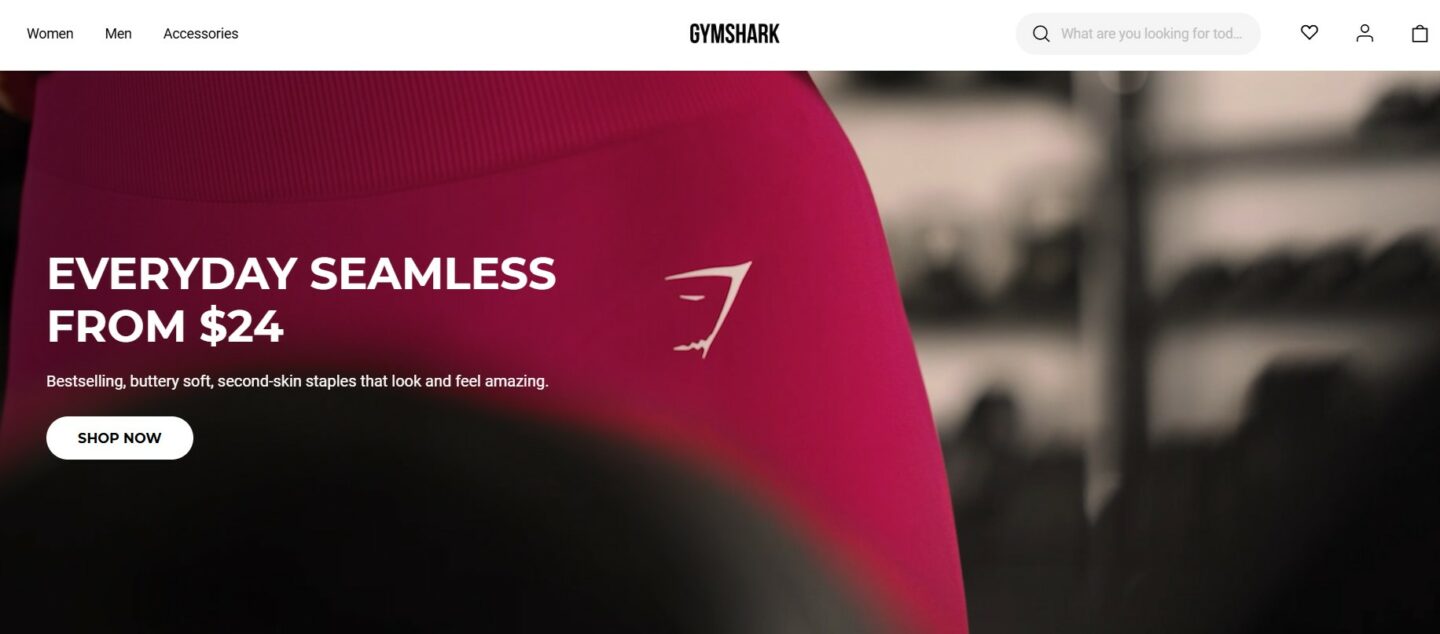
Gymshark is perhaps the best-known branded dropshipping success story. From a garage startup in Birmingham, it has grown into a billion-dollar global fitness brand.
Its journey shows how authentic founder passion, combined with strategic brand building, can make dropshipping origins completely invisible to customers.
Founded by fitness enthusiasts Ben Francis and Lewis Morgan, Gymshark initially dropshipped fitness supplements before transitioning to manufacturing its own athletic apparel.
Its products are designed by athletes. It focuses on comfort, performance, and function — qualities its fitness-focused audience values most.
Early on, Gymshark leaned heavily on influencers and athletes across Instagram, TikTok, and YouTube, way before this strategy became mainstream.
How to start a branded dropshipping store
Building or starting a successful dropshipping business requires strategic planning and consistent execution. Here’s a simple seven-step guide for how to dropship branded products:
- Choose a profitable niche
- Define your brand identity
- Research and source quality suppliers
- Build your Shopify or WooCommerce store
- Add branded elements to products and store
- Launch marketing campaigns
- Optimize and scale your store
1. Choose a profitable niche
Start by narrowing your focus. Picking a niche helps you build expertise and connect with customers more deeply. Look for areas with passionate communities and repeat buyers, such as pets, fitness, hobbies, or lifestyle products.
Customers in these niches show strong brand loyalty. This means they’re more willing to pay premium prices for dropshipping products that align with their identity and values.
This is especially true for high-ticket dropshipping niches, where customers expect high-quality products and are willing to spend more for items that match their lifestyle.
Do your homework. Join social groups, forums, and communities to see what people are buying and where they feel current stores fall short. Those gaps could be your opportunity to make a difference.
2. Define your brand identity
A strong brand goes beyond a logo or color palette. It includes your voice, values, and the personality you project. Build your identity around:
- A clear value proposition
- Consistent brand voice
- Visual style (colors, fonts, imagery)
- Core values
Start with a brand name that’s easy to remember, simple to pronounce, and available as a domain and social handle.
Then, keep your branding consistent across your website, packaging, marketing, and customer service. Every interaction should feel like it comes from the same source.
3. Research and source quality suppliers
Your suppliers have a direct impact on customer satisfaction, so choose carefully. Look for those that offer:
- Consistent product quality
- Fast shipping
- Private or white labeling options
Some common platforms include AliExpress, Oberlo, Spocket, and CJDropshipping. Always test suppliers before committing. Order samples, check shipping times, and evaluate packaging. Good communication is just as important as good products.
4. Build your Shopify or WooCommerce store
Both Shopify and WooCommerce are solid ecommerce platforms. Shopify is easier to set up, while WooCommerce offers more customization if you want extra control.
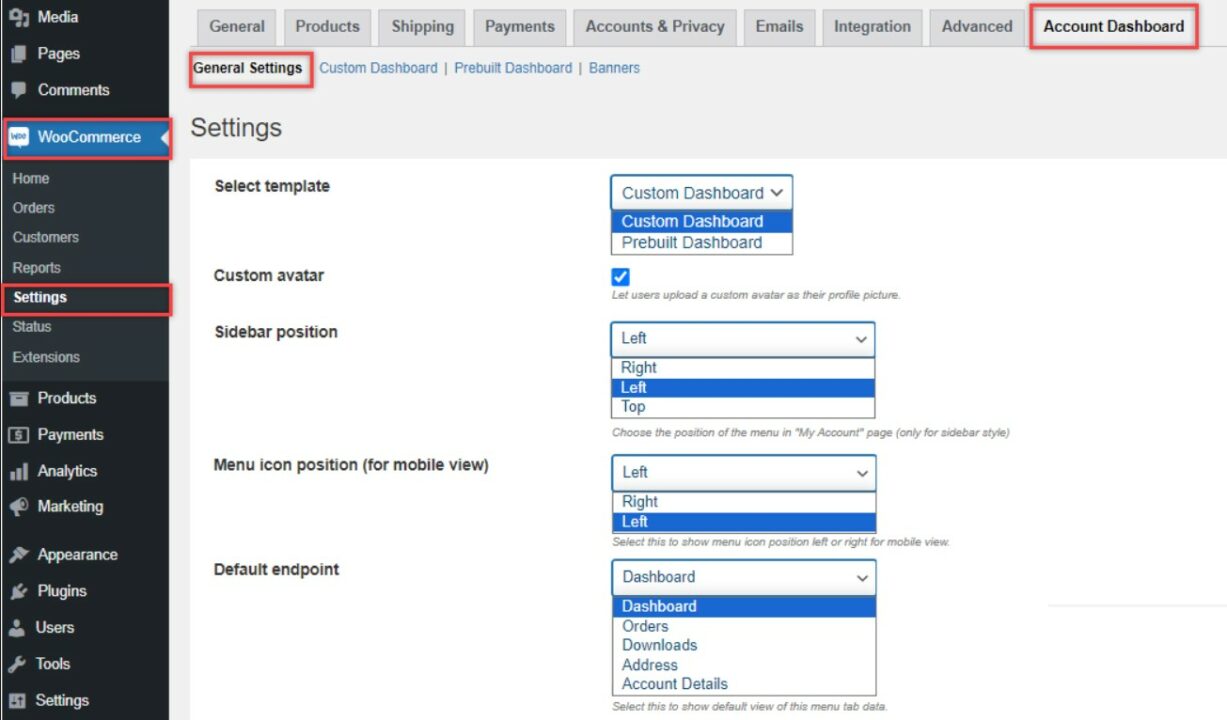
Both platforms support the integrations and features necessary for successful branded dropshipping.
Whichever you choose, make sure your store theme is clean, fast, and mobile-friendly. Essential trust-building pages include:
- Detailed product descriptions
- Clear shipping and return policies
- Relatable customer testimonials
- An engaging “About” page
5. Add branded elements to products and store
Your packaging sets the first impression customers get of your brand. Go beyond generic boxes by adding branded inserts, thank-you notes, and branded wrapping that reinforce your brand identity and values.
The unboxing experience significantly impacts perceived value and customer satisfaction. Customers are willing to pay premium prices when they feel like they’re receiving something special and not just another generic package.
Work with suppliers who can accommodate custom packaging requirements. You can also consider using fulfillment services that handle branded packaging on your behalf.
This added expense pays off — increased customer satisfaction, repeat purchases, and improved word-of-mouth marketing.
6. Launch marketing campaigns
Email and SMS marketing form the foundation of successful branded dropshipping. This is because they allow direct communication with customers at scale while maintaining a personal touch.
On the other hand, social media and influencer partnerships amplify your reach and credibility within your target niche.
Platforms like Omnisend provide the perfect platform for a branded dropshipping business to automate its marketing while maintaining personalized customer relationships.
Omnisend comes with powerful email automation workflows and other intuitive features without being clunky. It has advanced segmentation and integrated email and SMS capabilities specifically designed for ecommerce businesses.
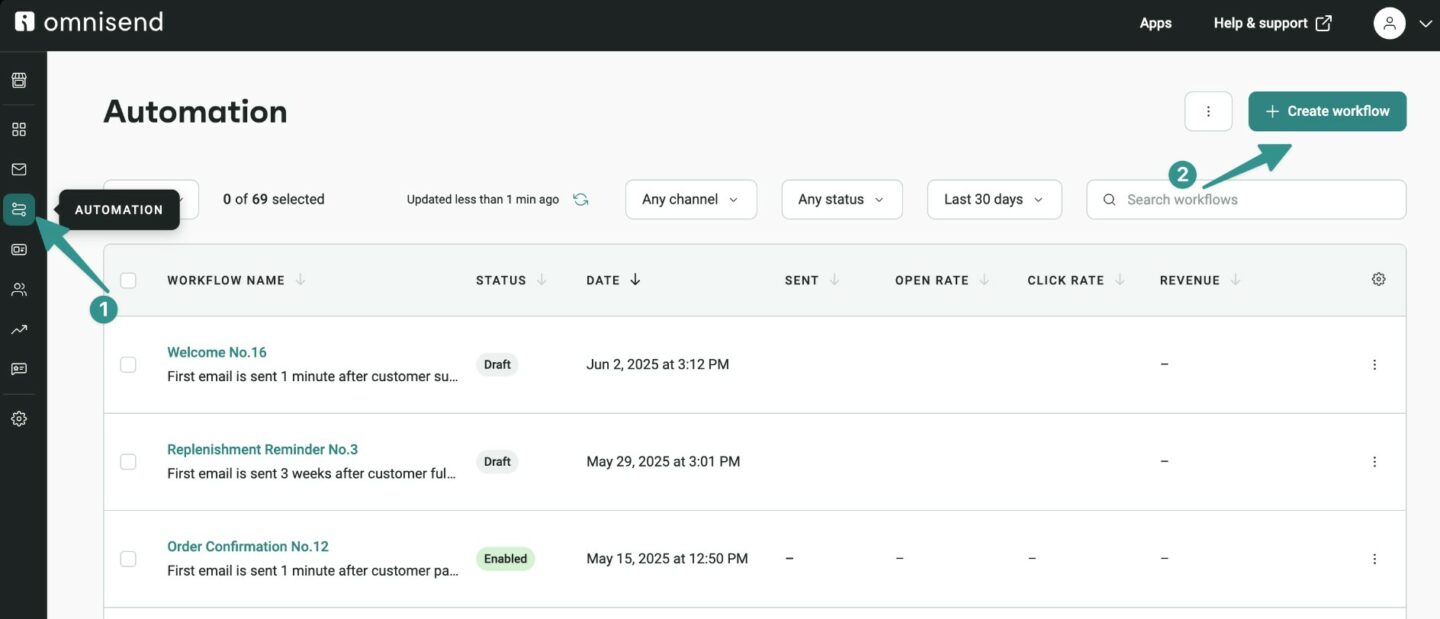
Key features include product recommendations, abandoned cart recovery, welcome series automation, and detailed analytics that help you understand customer behavior.
 | Success story: Vagari Bags Jake Hughes, co-founder of Vagari Bags, demonstrates how branded dropshipping businesses can achieve exceptional results through strategic email and SMS marketing. Instead of focusing solely on product features, Jake shifted to storytelling and community building around customer experiences. This approach, using both email and SMS channels, delivered remarkable results: 50% open rates for email campaigns, 6–7% click rates for SMS, and an impressive 1:121 ROI for SMS campaigns. Vagari Bags created a comprehensive communication strategy that generated $121 for every $1 spent on Omnisend. Read the full success story here |
7. Optimize and scale your store
Track key metrics like conversion rates, customer lifetime value, and repeat purchase behavior to identify optimization opportunities. These metrics show you which aspects of your business drive the most value and deserve additional investment.
As profits grow, put money back into product development, advertising, and process improvements. Scale carefully so you don’t lose the quality and customer experience that made your brand appealing in the first place.
Focus on building systems and processes that can handle increased order volume without compromising the personalized experience.
Build a branded dropshipping store that stands out
To attain success in branded dropshipping, you need three core principles: an authentic brand identity, exceptional customer experience, and strategic marketing automation.
The success stories we looked at prove the effectiveness of this model. It turns simple product sales into lasting customer relationships that fuel growth.
If you want to stand out, focus on solving real problems, not just moving products. Partner with reliable suppliers who can meet your quality standards, provide fast shipping, and offer custom packaging. These details create the kind of experience that keeps customers coming back.
Automation platforms like Omnisend can help you manage marketing at scale. By combining email storytelling with SMS reminders, you can stay connected with thousands of shoppers while providing a personalized experience. Generic stores can’t compete with that level of connection.
Branded dropshipping FAQs
1. Is branded dropshipping profitable?
Yes, branded dropshipping typically generates 20–40% higher profit margins than traditional dropshipping. Customers typically pay premium prices for branded experiences and the perceived value they offer.
2. Do I need a supplier for branded dropshipping?
Absolutely. Reliable suppliers are necessary for branded dropshipping success. Look for suppliers offering custom packaging, reliable shipping, and consistent product quality to maintain your brand standards across all customer orders.
3. How much does it cost to start branded dropshipping?
Starting costs range from a few hundred to a few thousand dollars. Costs include domain registration, ecommerce platform subscription, initial marketing budget, custom packaging design, and sample orders for quality testing.
4. Can you dropship branded products, and what’s the difference from traditional dropshipping?
Yes, you can dropship branded products. Traditional dropshipping competes on price with generic experiences. On the other hand, branded dropshipping builds unique identities that command premium pricing through superior customer experiences, consistent branding, and emotional customer connections.
TABLE OF CONTENTS
TABLE OF CONTENTS


No fluff, no spam, no corporate filler. Just a friendly letter, twice a month.

 OFFER
OFFER







